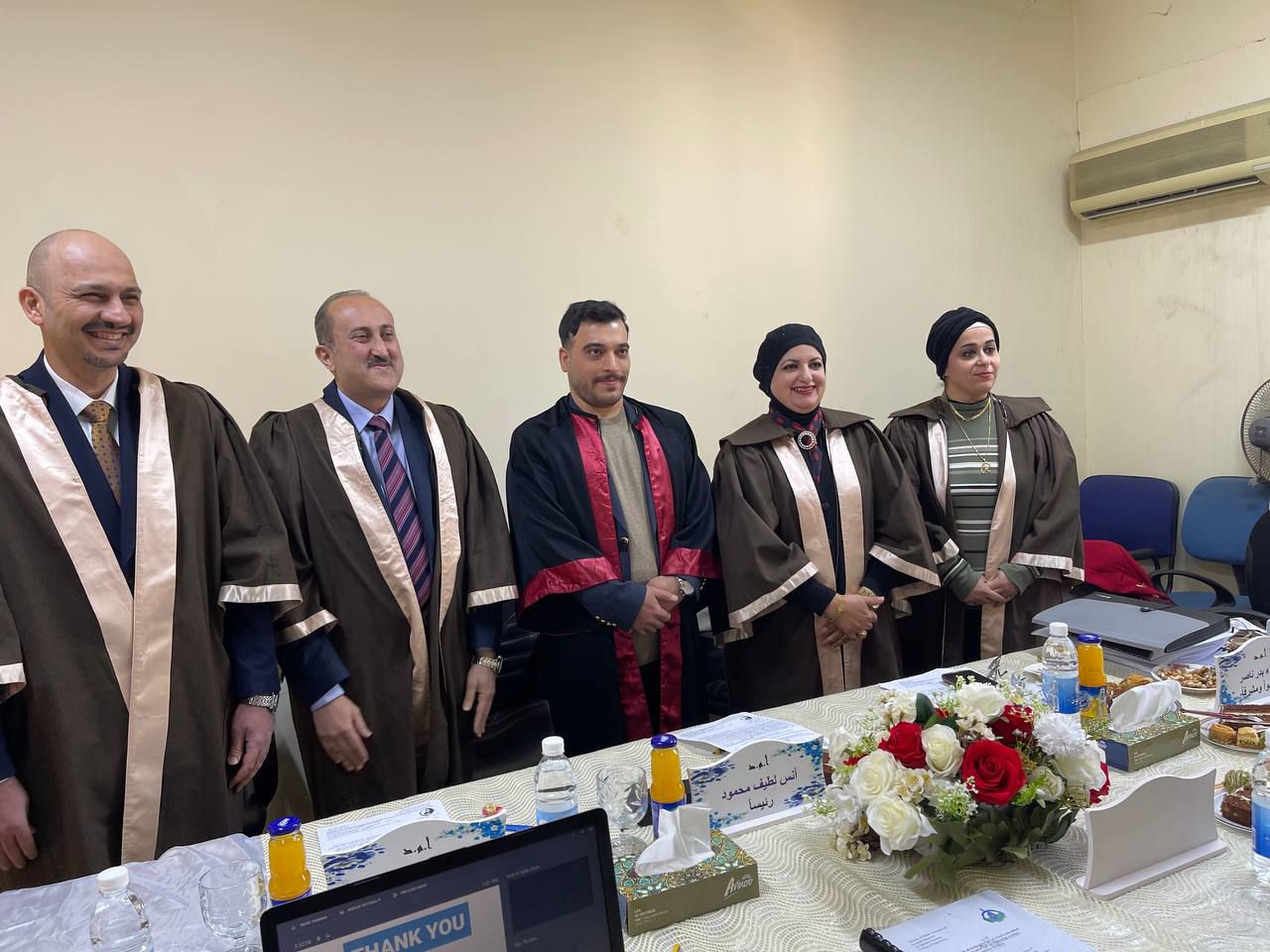Visitors: 25545138 Views
Done By: Unmanned Aerial Vehicle
Post Date: 2025-03-11
Last Browse: 2025-07-08

Assistant Professor Dr. (Anas Latif
Mahmoud) chaired the master’s discussion for the student (Hussein Dhu al-Fiqar
Jamil) from the Department of Computer Engineering / College of Engineering /
University of Nahrain on Tuesday 2/18/2025 for his thesis entitled: “Memristive-Based Physical Unclonable
Function Design of Authentication Architectures” This study shows the functionality (PUFs)
allow physical devices to act as unclonable security assessments, as the PUF is
resistant to hardware flaw attacks and acts as a fingerprint of electronic
devices. A typical type of PUF circuit that uses delay is the ring oscillator
PUF (ROPUF), Which
provides the ability to adapt to continuous changes in obtaining non-repeating
and unique secret key outputs by exploiting the advantage of the frequency
differences characteristics between the ring oscillators in the circuit. This
study discusses a structure that uses electronic components with
nanotechnology. It is a memristor device, specifically the Ag/MoS₂/ZnO/Ti
memristor. The use of the memristor included a simulation part that
approximates the theoretical mechanism of the device using MATLAB to extract
the hysteresis loop of the memristor model, which is considered as the
signature of the memristor behavior. After converting the voltage/current
values from analog to digital, these values will be included as an input
(challenge) to the ROPUF circuit. Field-programmable gate array (FPGA)
platforms are adopted to implement the memristive-PUF security architecture,
which includes memristor-based ring oscillators to extract a non-reversible
secret key that meets all security criteria.
Furthermore, this study investigates
the improvement in performance metrics such as uniqueness, uniformity, bit
distortion, and reliability, which are achieved in the following percentages,
respectively. For different FPGA devices, such as Spartan-3, the resulting metrics
were achieved as: 48.55%, 49.17%, 47.54%, and 98.22%. For Spartan-6, the
results were extracted as 48.78%, 48.11%, 48.87%, and 99.13%. The results for
Altera Cyclone II were 47.34%, 47.59%, 46.91%, and 97.42%.